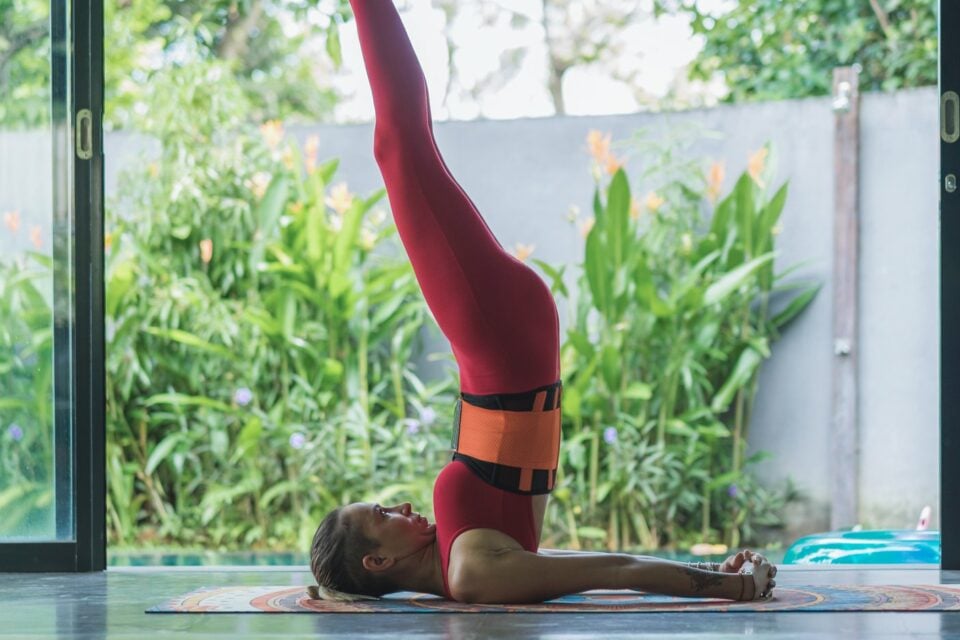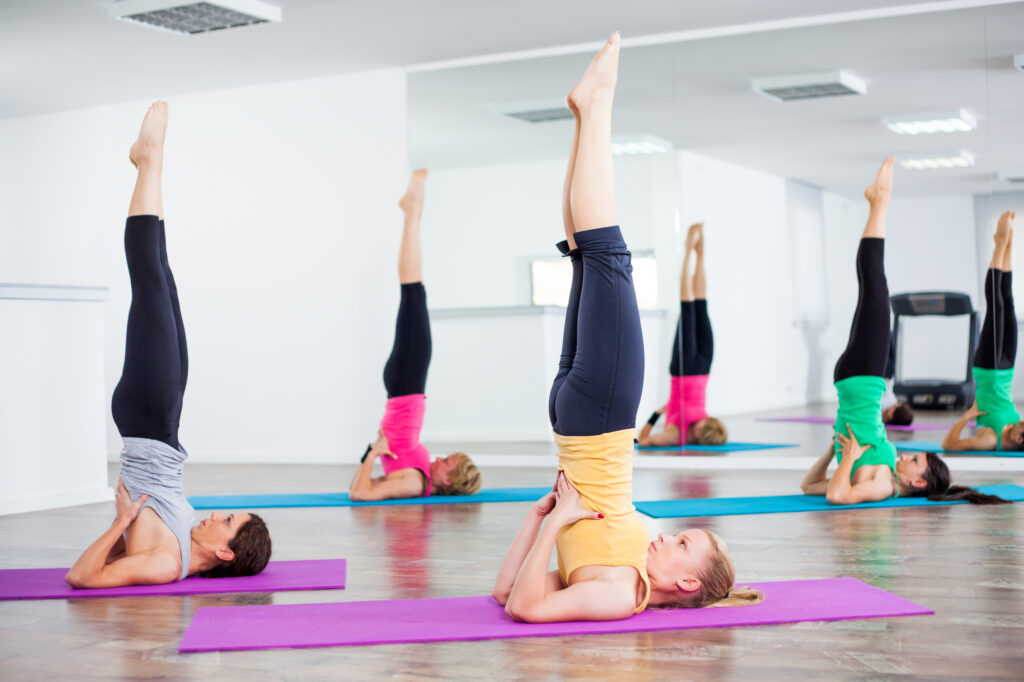Make the most out of Sarvangasana

Sarvangasana, or the shoulder stand, is one of the inversions where most yoga students start to work on their upside-down new perspective of the world.
Inversions are extremely important and Sarvangasana, or its variations, is a great opportunity for those who can’t do handstands or headstands. Many teachers recommend a minimum of five minutes of inversions.
None of these aspects makes Sarvangasana less important or a beginner pose. Keep reading and go deeper into your Sarvangasana.
How to take full advantage of Sarvangasana
Sarvangasana is not a pose to relax, as many people believe. You’re not supposed to rest all your weight on the hands.
- Once in the pose, keep the coccyx inside the body by activating your glutes;
- It’s important to keep the chest open since that’s one of the main benefits from this asana, consequently, the arms need to keep pressing against the floor;
- With time and persistence in this pose, the feet must stay in line with the body, without falling behind the head;
- The abs and the hips flexors must stay active since that promotes balance and alignment;
- The quadriceps stay contracted so that the legs keep extended. This can easily bring pain to the muscle, which is the good pain that shows you’re working your body on this pose;
- The knees and feet must stay together. Avoid the distraction of moving your feet around;
- The toes must point to the sky. Despite that, remove the tension from it. It’s not necessary;
- The hands must go on the direction of the shoulder blades, as must as possible. This movement must be done carefully so that you don’t compromise your neck.

Sarvangasana and breathing
In the shoulders and the neck is compressed and it’s normal if you find yourself breathing fast and superficially, the goal is exactly the opposite.
Since Sarvangasana allows the chest to open, it’s also its goal to work on the breathing. It’s important to keep the breaths long and deep and fight against the fast breathing.
Possible variations
Neck problems or lack of core strength can be a barrier to do a complete shoulder stand, but it must not be the reason to give up on this pose. Most of the times, there is a right variation for you!
One possibility is to work with the wall! By placing the glutes right next to the wall and raising your legs you can work your strength. If you press your feet against the wall and raise your hips by using more and more the core strength, you learn how to use these muscles. You can go up and down a few times, and later try to stay up and take a leg at a time off the wall.
For those who suffer from neck problems, use blankets! The blankets must be placed from the shoulders’ line to the direction of the hips, which means, the head lies down on the floor.
Viparita Karani, although it’s a different pose, is also an option if any of the previous works for you.
Benefits of Sarvangasana
- Sarvangasanasa is a great pose for those who suffer from thyroid problems, by enhancing the blood flow to this organ and promoting its correct functioning;
- As any other inversion, it promotes the health of the heart, so it must be a forever choice in our lives. It also promotes good circulation and prevents varicose veins;
- Promotes relaxation and good sleep;
- It’s good for a healthy digestive system.
Do you remember being a child and enjoying Sarvangasana the most? It’s time to be that kid again and make the most out of this asana.
You may also like:
- Yoga practice for energizing your body: 3 infalible poses
- 5 Yoga asanas for a strong core and amazing abs
- Yoga and strength: 5 asanas for strong arms
- Yoga asanas to relieve shoulder pain

